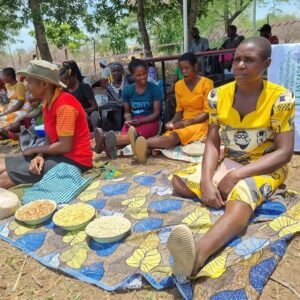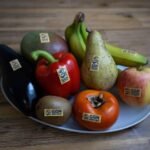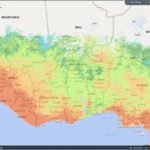By Gloriana Ndibalema – IITA, January 12, 2023, Millions of people around the world depend on banana and plantain (Musa sp.) as vital food staples and sources of income. A unique collection of cultivars known as the East African highland bananas (EAHBs) can only be found in the highlands of the African Great Lakes region. With an estimated yearly per capita consumption of 250 to 600 kg, these bananas are crucial to the food economy of this region’s 2.5 million farming households.
The future sustainability of EAHB production across the region is threatened by pests such as the banana weevil Cosmopolites sordidus, the burrowing nematode Radopholus similis, black leaf streak (BLS) pathogen Pseudocercospora fijiensis, Fusarium wilt caused by Fusarium oxysporum f. sp. cubense, and banana bacterial wilt caused by Xanthomonas campestris pv. musacearum.
A multidisciplinary team involving scientists from IITA–CGIAR, the National Agricultural Research Organization-Uganda (NARO-Uganda), the Alliance of Bioversity International and CIAT (ABC), the Tanzania Agriculture Research Institute (TARI), the National Agricultural Research Laboratories (NARL-NARO, Uganda), the Tanzania Official Seed Certification Institute (TOSCI), the University of Wisconsin-Madison, and the Swedish University of Agricultural Sciences recently conducted a study titled “TARIBAN1, TARIBAN2, TARIBAN3, and TARIBAN4 ‘Matooke’ Cooking Banana Cultivars for the Great Lakes Region of Africa”.
“EAHBs are highly susceptible to BLS. The pathogen causes necrotic leaf lesions on the photosynthetic area of the host plant, resulting in fruit yield losses (up to 50%) and poor fruit quality. In addressing the negative effects of BLS, IITA and NARO-Uganda researchers developed the best EAHB hybrids called NARITA to increase crop yields and income of smallholder farmers,” stressed Priver Bwesigye, NARO banana leader.
Following early evaluation trials in Uganda to select cultivars for multilocational testing, the best hybrids were evaluated at five multi-sites over three cropping cycles in Tanzania and Uganda, which was used to make the release and registration decision. The field trials were conducted by IITA, NARO, TARI, and ABC. “Multi-site trials involving the “Matooke” and other banana cultivars were performed in Tanzania from 2016 to 2019, with the aim of selecting breeding clones that combine BLS resistance with steady high production and other desirable traits and that have the potential for adoption by farmers and consumers,” IITA Banana Breeder Rony Swennen narrated.
TARIBAN1, TARIBAN2, TARIBAN3, and TARIBAN4 were the names of the top four NARITA hybrids released in Tanzania in 2021, as explained by Mpoki Shimwela, the TARI lead banana scientist. They were included in Tanzania’s national cultivar list as TARIBAN, making them available for farmer propagation and distribution. Their average yield potential in Tanzania might reach 20.3 t ha-1 per year, with bunches weighing up to 51.0 kg.
Shimwela said that the findings from the “Yield Stability of East African Highland Cooking Banana ‘Matooke’ Hybrids” study show that the sensory characteristics of the hybrids were closest to those of the most popular traditional, consumer-preferred Matooke cooking banana cultivar, Mbwazirume, in color, aroma, taste, mouthfeel, texture, and overall acceptability. Moreover, farmers choose which cultivar to plant in a field based on the anticipated economic and social benefits, typically defined in terms of maximum yield potential and performance stability. This critical decision determines how long they can continue to produce banana.
ABC Researcher Noel Madalla added that the four hybrids registered had been proven to have high yield, stability, and adaptability, making them suitable for Matooke banana production in the target population of environments in the East African region from which the testing sites were drawn, as well as to be introduced into areas where BLS has a severe impact and threatens farmers’ livelihoods.
For wide scaling up of these TARIBAN varieties, the cultivars are available from TARI at its subcenters of TARI Tengeru, TARI Maruku, and TARI Uyole in Tanzania. Additionally, tissue culture plantlets are available from public laboratories at TARI Tengeru and TARI Mikocheni and designated private tissue culture laboratories in Tanzania. The National Banana Research Program of NARO in Kawanda, Uganda, is responsible for maintaining the TARIBAN (or “KABANA”) in Uganda at on-station fields and in vitro. These cooking banana hybrids are also accessible through NARO and specific domestic private tissue culture enterprises in Uganda.







